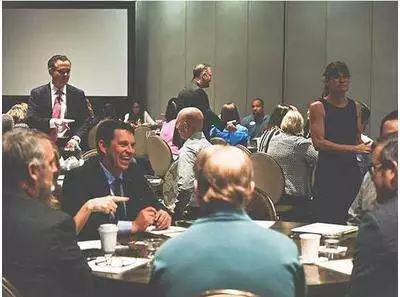8 things you probably didn't know can be composted
Rich, moist compost is every garden’s favorite food. If you’ve ever ordered a load for home delivery, you’ve found it comes at a premium price for that very reason. However, composting is easy and fun to DIY, and you might be surprised what you can throw into the pile.
The composter
Don’t let the fact that you don’t have an expensive prefabbed composter derail your efforts. You can easily build your own composter from scrap lumber or metal. Even a loose pile will work so start small, but start!
Related: Eco-innovations tackling food waste at every level
The right combination
Composting is about combining natural ingredients that can decompose, turning into nutrient-rich dirt that can be used to refuel the next round of gardening goodness. That means what you put into the compost pile should be valuable as a component to your future plant food.
Put simply: You’ll need a balance of brown and green items in addition to the often-discussed food scraps. We’re not necessarily talking about color here, but rather the type of items. That means you’ll want some brown items like small twigs and green material such as grass clippings.
Organic material
As a reminder, food waste is a central and important component in nutrient-rich compost. The compost pile loves egg shells, coffee grounds, corn husks, veggie stalks, banana peels, onion skins, nut shells, grains, tea and basically any non-animal, natural product.
Brown materials
To supplement the food scraps from the kitchen and garden, you’ll want some natural brown materials.

1. Bark and sticks
Use small pieces of wood and thin branches. Turning them into chips or bark works best, but any size will break down eventually.
2. Paper products
You may not realize that paper is another valuable food for your compost. Think about items in your home that most closely resemble the tree they came from. Avoid bleached and chemically-treated materials but toss in toilet paper rolls, paper bags, paper plates that are not waxy, cardboard, egg cartons, shredded newspaper, coffee filters, paper towels, popsicle sticks, napkins and paper towel rolls.
Avoid recycled paper, which should go out with your household recycling instead. Again, the closer to the original form the material is, the better it is for your garden.
3. Other natural products
Along the same lines as material that comes from trees, you can also include products made from other plants. Cotton is a good example. However, only include organic cotton without dyes. Cotton balls, strips of sheets and old shirts all make the cut. Similarly, hemp, jute and burlap can all be added to the pile.
Other common household items can also be recycled back into nature. You’re looking for natural materials here, created without chemicals or plastic. Think wine corks, pine cones, acorns, toothpicks, wood chopsticks and leaves.
Green materials
The third component in the compost triad is green materials. Layer in plants and plant products to balance out the nutrient base.

4. Grass and plants
Grass clippings offer essential nutrients to the mix, but make sure your layers are thin and consistent for the best compost recipe. You can also include hay and bedding from herbivore animals like guinea pigs, along with their waste. Do not include animal manure from dogs and cats.
Be sure to recycle your garden plants back into the composter once the harvest is complete. Tomato plants, herbs, flowers and other living plants are just a few examples.
One caveat here is to avoid putting diseased plants into the mix. Although the heat of the composting process eliminates many forms of bacteria and disease, it’s possible to transfer last year’s problem into next year’s crops.
A few surprises
There are some other household items you may not have considered suitable for the compost heap.
5. Dryer lint
Technically, your dryer lint may contain a small amount of microplastics if your clothing and linens aren’t made from natural fibers. However, dryer lint is mostly made up of small bits of fibers that sluff off clothing so it’s similar to composting organic cotton tees.
6. Ashes
You can also add fire ashes to the compost bin as long as the wood you burned was chemical free. In other words, avoid the ashes from garbage burns, but toss in those from the fireplace.

7. Loofahs
Loofahs and natural sponges are another little-known ingredient. If you’re no longer using it, toss it into the compost pile.
8. Vacuum ingredients
When you’re cleaning the house, feel free to dump the swept-up dirt, dust, and even pet hair into the pile. You can even put your full vacuum bag in, as long as the contents are mostly dust and dirt, rather than legos and Barbie shoes.
The things to avoid
Do not add any animal products, fat, dairy, plastic, foil and other non-organic materials. If it did not come directly from the earth, it should not go back into it. Also, avoid grass clippings that contain pesticides. Remember that even though it will break down into dirt, these items will eventually go into the next round of food you produce and eat.
Size matters
The truth is that all natural materials will break down eventually, even if you don’t have the ideal location, proper amount of moisture or precise combination of ingredients. However, your compost pile will perform better with attention to creating somewhat equal layers and cutting material into fairly consistent sizes. For example, an entire pumpkin will take longer to break down than one that is cut into a dozen pieces. The same is true for citrus, branches, etc.
Make the effort to layer your compost with a robust combination of ingredients. Your garden will thank you.
Via Better Homes & Gardens
Images via Pexels




